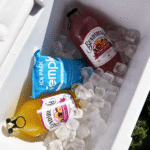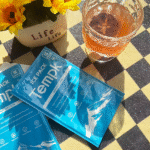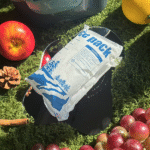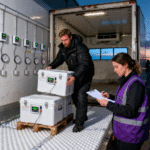Cold Supply Chain Examples: What Works in 2025?
Cold supply chains keep temperature sensitive products safe from producer to consumer. In 2025 the global cold chain market is projected to soar beyond USD 454 billion, growing at double digit rates toward USD 776 billion by 2029. Without reliable temperature control, roughly 14 % of food is lost between harvest and retail and more than 85 % of biologic medicines could degrade. This guide explains what makes a cold supply chain work, looks at real cold supply chain examples across food, pharmaceuticals, agriculture and e commerce, and highlights the innovations shaping 2025. You’ll learn how robust cold chains protect your products, reduce waste and comply with stringent regulations.
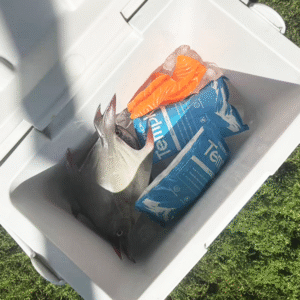
Real world examples across industries – see how cold supply chains operate in food, pharmaceutical, agricultural and e commerce contexts.
Key components and best practices – learn about temperature ranges, packaging and compliance requirements.
2025 trends and innovations – explore automation, sustainability, micro fulfilment and real time monitoring.
Actionable tips and decision tools – get practical advice tailored to producers, logistics managers and small scale farmers.
Frequently asked questions – find concise answers to common cold supply chain queries.
Why Do Cold Supply Chains Matter in 2025?
Cold supply chains prevent spoilage, maintain safety and unlock new markets. A cold supply chain is a network of temperature controlled storage, transportation and handling that keeps goods within a specified range from production to final delivery. Without this chain, sensitive products such as fresh foods, vaccines and biologics spoil quickly and lose effectiveness. Market research predicts that the global cold chain sector will grow from about USD 454 billion in 2025 to USD 776 billion by 2029 and that employment in this sector already exceeds 576 000 workers. Food alone accounts for US$90.81 billion in cold chain logistics in 2025, with projections reaching US$219.44 billion by 2034. Keeping products cold reduces waste, protects revenue and ensures compliance with safety regulations such as the U.S. Food Safety Modernization Act (FSMA).
Expanded explanation
Imagine your refrigerator at home: if the power goes out for a day, milk curdles and meat spoils. Cold supply chains scale that fridge up to a global network. Producers cool produce immediately after harvest, store it in refrigerated warehouses, transport it in trucks, containers and planes, and finally deliver it to retailers and consumers at the right temperature. A break in the chain has costly consequences – not only wasted product but also fines for non compliance. In pharmaceuticals the stakes are even higher because many biologics must stay between 2 °C and 8 °C; once temperature deviates, the medicine can become ineffective or dangerous.
Food Cold Chain Example – From Farm to Fork
Food cold chain logistics ensure your steak stays juicy and berries crisp by controlling temperature from farm to fork. This chain starts with pre cooling, where freshly harvested produce or meat is quickly chilled to stop microbial growth. Items then enter cold storage, typically refrigerated warehouses, which dominated the food cold chain market with a 55.66 % share in 2024. Transportation uses refrigerated trucks, reefer containers and increasingly sea freight to move goods; real time monitoring ensures temperatures stay within set limits. Finally, goods reach distribution centres and retailers, where they must still stay cold until sale. Temperature ranges vary: frozen foods require –18 °C to –25 °C, while chilled goods need 0 °C to 4 °C. Regulatory compliance is strict – under FSMA producers and carriers must agree on control methods and prove they maintained proper conditions.
Table 1 – Temperature ranges and challenges in cold supply chain sectors
| Sector | Typical temperature range | Unique challenge | Real world example |
| Food & Beverage | Frozen: –18 °C to –25 °C; Chilled: 0 °C to 4 °C | Variable shelf life and strict FSMA documentation | Cross dock hubs that handle fresh produce and frozen meats, such as ColdStar Logistics’ hub storing 3 500 pallets and integrating last mile delivery (example from industry case studies). |
| Pharmaceuticals & Biologics | 2 °C to 8 °C for most biologics; some vaccines require –30 °C or colder | Potency loss and strict regulatory compliance | Aeronet Worldwide transported COVID 19 vaccines in gel packs pre conditioned at –30 °C; Merck used AI driven control towers to reroute shipments when delays threatened product integrity. |
| Agriculture & Produce | 0 °C to 10 °C depending on crop; solar powered modular units provide off grid cooling | Lack of rural infrastructure; high post harvest losses | Off grid solar units installed in rural communities can cut post harvest losses by up to 40 % for perishable crops; farmers monitor produce with IoT sensors and blockchain networks. |
Practical tips and advice
Small food producers: invest in pre cooling and real time monitoring to keep products within the 0 °C–4 °C range. Make sure your packaging provides adequate insulation and consider using IoT sensors to record temperatures during transit.
Vaccine distributors: use pre conditioned gel packs at –30 °C for products like COVID 19 vaccines. Work with experienced 3PL providers who can handle time sensitive shipments and rescue distressed deliveries when volumes surge.
Farmers and cooperatives: adopt solar powered modular cold storage in rural areas. These units reduce reliance on grid electricity and enable farmers to store produce until market prices are favourable. Coupling cold storage with fleet management systems reduces delays and spoilage.
Real case: A leading medical supplier began distributing COVID 19 vaccines using gel packs conditioned at –30 °C. Aeronet Worldwide’s Los Angeles station transported the packs from the manufacturer to pre conditioning facilities and then to distribution centres in Tennessee and California. The company handled over 100 temperature controlled, time sensitive shipments and delivered distressed orders directly to hospitals, winning recognition as an approved partner.
How Do Pharmaceuticals Move Through Cold Supply Chains?
Pharmaceutical cold supply chains demand precise temperature control and advanced tracking. The pharmaceutical cold chain market is projected to grow from USD 5.3 billion in 2023 to USD 9.6 billion by 2035, and more than 85 % of biologic drugs require cold storage. In September 2024 the world’s largest cold storage company, Lineage Logistics, raised USD 4.4 billion in an IPO, signalling the critical role cold chain logistics play in the global economy. Cold chain failures can compromise patient safety and result in costly recalls, making integrity paramount.
Expanded explanation
Pharmaceutical products such as insulin, vaccines, gene therapies and monoclonal antibodies are temperature sensitive. Breakdowns in refrigeration, prolonged exposure to heat or simple human error can render these products unusable. During the pandemic Merck used an AI powered control tower that created digital twins of shipments and rerouted them in real time to avoid delays and temperature excursions. Modern cold supply chains rely on IoT sensors, satellite tags and RFID devices to track temperature, location and even whether a package has been opened. Companies like Americold and United States Cold Storage are automating warehouses with robotics and using smart phase change materials that absorb heat and maintain temperature without external power.
Vaccine distribution example
Cold supply chains for vaccines require maintaining extremely low temperatures and strict chain of custody documentation. For example, a vaccine supplier distributed COVID 19 vaccines in gel packs pre conditioned at –30 °C, transporting them via refrigerated trailers to conditioning facilities and then to distribution centres. The logistic provider handled over 100 temperature controlled shipments and delivered distressed orders directly to hospitals. Vaccines like mRNA shots may need to be kept below –70 °C, so specialized freezers, dry ice and packaging with phase change materials are essential. Regulatory requirements such as Good Distribution Practice (GDP) and FSMA Rule 204 mandate traceability and documentation of temperature data throughout the chain.
Practical tips for pharmaceutical logistics
Leverage digital control towers: adopt AI enabled systems that create digital twins of shipments, predict risks and automatically adjust routes when delays occur.
Choose advanced packaging: use phase change materials and vacuum insulated panels to maintain 2 °C–8 °C for biologics and even cryogenic temperatures for gene therapies. Companies like EMBALL’ISO are developing materials that absorb heat and keep pharmaceuticals cold without external power.
Invest in sensor networks: equip shipments with RFID, cellular or satellite tags to monitor temperature, humidity and location in real time. Data logs support audits and help meet GDP and FSMA requirements.
Real case: When Merck faced supply chain disruptions during the pandemic, its AI powered tracking system rerouted a multimillion dollar shipment of temperature sensitive drugs bound for China, ensuring on time delivery despite severe global strains. This success highlighted the importance of technology innovation in maintaining pharmaceutical cold chain integrity.
Agriculture and Perishables: Reducing Waste through Cold Supply Chains
Agricultural cold chains cut post harvest losses and support food security. Modern cold storage can reduce losses by up to 40 % for perishable crops. Farmers in remote areas often lack grid electricity and risk spoilage before reaching markets. However, 2025 brings innovations like solar powered modular cold storage units that run on renewable energy and are scalable from smallholder to cooperative level. Digitized cold chain networks use IoT sensors and blockchain to track temperature and quality from field to market, enabling real time intervention and improved consumer trust. AI driven parametric insurance pays farmers when measurable triggers (such as temperature deviations) occur, speeding payouts and reducing the burden of proof.
Expanded explanation
Agriculture faces climate change, fluctuating market demands and natural disasters. Without proper cooling, a large portion of vegetables, fruits and dairy products spoils post harvest. Solar powered cold rooms, combined with fleet management systems and digitized supply networks, allow farmers to store produce safely and transport it efficiently. Off grid cooling means communities far from electricity grids can still access cold storage, reducing waste and improving income. Digitized networks provide traceability and support for risk coverage schemes – when a sensor detects temperature deviations, it can trigger insurance payouts automatically.
Practical tips for agricultural cold chains
Implement solar powered storage: install modular cold units powered by solar panels in areas with unreliable electricity to extend storage life and reduce reliance on diesel generators.
Adopt IoT and blockchain: equip storage and transport containers with sensors to track temperature, humidity and location. Blockchain platforms build trust by providing verifiable records of a product’s journey.
Explore parametric insurance: consider AI driven risk coverage that pays out based on weather or temperature triggers. This reduces the administrative burden on farmers and provides rapid compensation after a loss.
Real case: A farming cooperative in Sub Saharan Africa installed solar powered cold rooms and integrated IoT sensors with a blockchain based supply network. The project allowed farmers to store perishable crops for longer periods, reducing post harvest losses and earning higher prices. An AI driven insurance scheme automatically paid out when a storm damaged crops, stabilizing farmers’ incomes.
E Commerce and Meal Kits: Serving Convenience with Cold Chains
E commerce and meal kit businesses depend on cold chains to deliver ready to cook ingredients and prepared meals. Changing consumption patterns toward fresh, healthy and locally sourced food are reshaping cold storage infrastructure. Companies are expanding capacity for fresh produce, dairy and meal kits and prioritizing transparency and efficiency. Urban and suburban micro fulfilment centres integrate automated picking systems and advanced temperature controls to meet demand for fast delivery. The rapid growth of online grocery means last mile distribution must be precise; collaborative warehouses, repurposed facilities and partnerships with third party logistics providers help ensure perishable goods arrive fresh.
Practical tips for e commerce cold chains
Develop micro fulfilment centres: invest in small, automated warehouses near customers to reduce transit times. Use energy efficient refrigeration and LED lighting to cut costs and carbon emissions.
Optimize last mile delivery: collaborate with local partners and 3PLs, use route optimization algorithms and incorporate insulated packaging to maintain temperature during the final leg.
Embrace sustainable materials: choose biodegradable insulation and reusable packaging to minimize waste and appeal to environmentally conscious consumers.
Real case: A meal kit company established micro fulfilment hubs in urban centres and integrated robotic picking with real time temperature monitoring. By locating storage close to customers and using reusable insulated boxes, the company reduced delivery times and energy costs while maintaining freshness. Partnerships with local couriers and predictive analytics further improved last mile reliability.
2025 Cold Supply Chain Trends and Innovations
The cold chain industry is evolving rapidly, driven by technology, sustainability and changing consumer demands. Below are the key trends shaping 2025 and beyond.
Automation and robotics
Automation is taking centre stage. As labour shortages and rising costs persist, cold storage facilities are adopting automated storage and retrieval systems and robotic handling to streamline operations. Robots can operate continuously without breaks, reducing errors and improving throughput, while automated temperature controls ensure consistent product quality. Studies show that about 80 % of warehouses remain unautomated, highlighting substantial growth potential.
Sustainability and energy efficiency
Environmental concerns and tightening regulations are pushing sustainability to the forefront of cold chain logistics. Energy efficient refrigeration systems, renewable energy sources and eco friendly packaging are becoming necessities, not optional extras. Sustainable practices reduce carbon footprints, cut operational costs and help companies comply with emissions regulations. For example, investments in LED lighting, solar integration and insulated docks can reduce energy costs by almost 50 %.
End to end visibility and real time tracking
Maintaining product quality requires unbroken visibility. IoT enabled tracking devices provide real time data on location, temperature and humidity throughout the journey. This enables logistics companies to optimize routes, prevent spoilage and meet regulatory requirements. Real time visibility also enhances customer satisfaction by providing shipment updates and verifiable records.
Micro fulfilment and speculative construction
Cold storage demand is driving speculative construction – developers build modern cold warehouses without pre leased tenants, betting on future demand. High growth regions like Texas, Florida and Georgia account for nearly half of new cold storage developments. Operators are also investing in micro fulfilment centres within cities to meet e commerce demand, integrating automated picking and advanced temperature control.
Investment and consolidation
Cold storage has become one of the most attractive real estate sectors. Average asking rents for cold storage facilities have risen more than 96 % since 2019. The high barriers to entry and critical role of cold storage in global supply chains make the sector resilient and profitable. Investors are funding speculative builds and modernization projects, including repurposing old warehouses with modern technology.
Last mile optimization
Delivering temperature sensitive goods to consumers’ doorsteps remains challenging. Strategies include establishing collaborative warehouse spaces, repurposing older facilities with modern cold technologies and partnering with 3PL providers. Optimizing delivery routes and using insulated packaging improve reliability and ensure products arrive in peak condition.
Market Insights and Regional Growth
The cold chain sector ranks among the top 5 % of technologies tracked by innovation platforms. Recent analysis shows:
Rapid market growth: The global cold chain market is expected to grow from USD 454.48 billion in 2025 to USD 776.01 billion in 2029 at a compound annual growth rate of 12.2 %. Grand View Research estimates a market size of USD 316.34 billion in 2024 and projects a 19.2 % CAGR from 2025 to 2030. Straits Research forecasts growth from USD 416.91 billion in 2025 to USD 1.24 trillion by 2033.
Investment and innovation: Over 1 880 funding rounds have been completed in the cold chain sector, with an average investment value of USD 56.2 million. More than 2 800 patents and 600 grants highlight the industry’s focus on innovation. Investors like Newmark Group and Oxford Properties have collectively invested over USD 5.32 billion in cold chain projects.
Global footprint: Major hubs in the United States, India, China, the United Kingdom and Canada drive cold chain growth. In China alone, demand for cold chain logistics reached 365 million tons in 2024, a 4.3 % year on year increase.
Sector employment: The cold chain industry employs more than 576 300 people worldwide and added over 26 800 new employees in the past year.
These numbers illustrate why building robust cold supply chains is a strategic imperative for businesses looking to thrive in 2025 and beyond.
Frequently Asked Questions
What are some food cold supply chain examples? A typical food cold supply chain starts with pre cooling harvested produce, storing it in refrigerated warehouses, transporting it using refrigerated trucks or containers, and finally delivering it to retailers. Temperature ranges vary – frozen goods need –18 °C to –25 °C, while chilled goods stay between 0 °C and 4 °C. Cross dock hubs and micro fulfilment centres are used to reduce transit times and preserve freshness.
How do pharmaceuticals maintain cold chain integrity? Pharmaceutical logistics rely on specialized packaging (phase change materials, vacuum insulated panels), digital control towers and IoT sensors that track temperature and location. Strict regulatory frameworks (GDP, FSMA Rule 204) require documentation of every step. Many biologics must remain between 2 °C and 8 °C, and some vaccines need –30 °C or colder.
Why is agriculture adopting cold supply chains? Inadequate storage leads to high post harvest losses. Modern cold storage and digitized supply networks can reduce waste by up to 40 %. Solar powered modular units and IoT monitoring allow farmers in rural areas to store produce safely and sell when prices are favourable.
How can a small business implement a cold supply chain? Start by assessing your product’s temperature requirements and choosing suitable insulated packaging. Partner with logistics providers experienced in cold chain management and invest in simple data loggers to monitor temperature. For high value or sensitive products, consider real time tracking and AI enabled route optimization to prevent delays.
Summary and Recommendations
Cold supply chains are the backbone of modern logistics, ensuring that food, medicine and agricultural products arrive safe and potent. In 2025 the cold chain market is booming, driven by growth across food, pharmaceuticals and e commerce. Key takeaways include:
The global cold chain market is expected to leap from USD 454 billion in 2025 to USD 776 billion by 2029. Food cold chain logistics alone will more than double by 2034.
Maintaining temperature integrity is critical – 14 % of food is lost due to inadequate temperature management, and 85 % of biologics need cold storage.
Real world examples show how cold chains operate: pre cooling, refrigerated storage, temperature controlled transport and last mile delivery. Vaccine case studies highlight the need for –30 °C gel packs and rapid response to distressed shipments.
2025 trends include automation, sustainability, real time tracking, micro fulfilment, speculative construction and investment. Adopting these innovations improves efficiency, reduces costs and strengthens resilience.
Actionable next steps
Assess temperature requirements: categorize your products into frozen, chilled or controlled ambient groups and plan appropriate storage and transport.
Choose the right packaging: select insulation (EPS, polyurethane, vacuum panels) and cooling agents (gel packs, dry ice, phase change materials) suited to your temperature needs.
Implement monitoring: use data loggers or IoT sensors for real time temperature and location tracking. For high value shipments, deploy AI enabled control towers to predict risks and adjust routes.
Partner strategically: work with experienced cold chain logistics providers who can handle pre conditioning, storage, transportation and last mile delivery. Evaluate their contingency plans and compliance records.
Invest in sustainability: adopt energy efficient refrigeration, solar power and eco friendly packaging to cut costs and meet regulatory goals. Explore reusable containers and recycling programs.
Stay informed: monitor regulatory changes like FSMA Rule 204 and emerging technologies such as blockchain and parametric insurance to keep your cold supply chain ahead of the curve.
About Tempk
Tempk is a leading provider of cold chain packaging solutions. Our R&D team designs insulated boxes, reusable ice packs and thermal liners that maintain products within precise temperature ranges. We prioritize eco friendly materials and offer packaging that can be reused or recycled. With decades of experience and certifications like Sedex and ISO, we provide reliable products for food delivery, pharmaceuticals and agricultural shipments. We’re committed to helping you build a resilient cold supply chain.
Call to action
Ready to safeguard your temperature sensitive products? Contact our specialists for personalized packaging recommendations and discover how our solutions can improve your cold supply chain. We offer consultations, product samples and guidance on regulatory compliance. Reach out today to keep your goods at the right temperature from origin to destination.


















